E-Museum of Pyrographic ArtAntique Pyrography Tools Exhibit
|
| - Café Flambé - | - Portraits and Paintings - | - Decorative and Applied Art - |
| - Folk and Traditional Art - | - Antique Art - | - Special Hall - | - Sculpture - |
| - Children's Hall - | - Bookstore and Library - | - Tools and Techniques - |
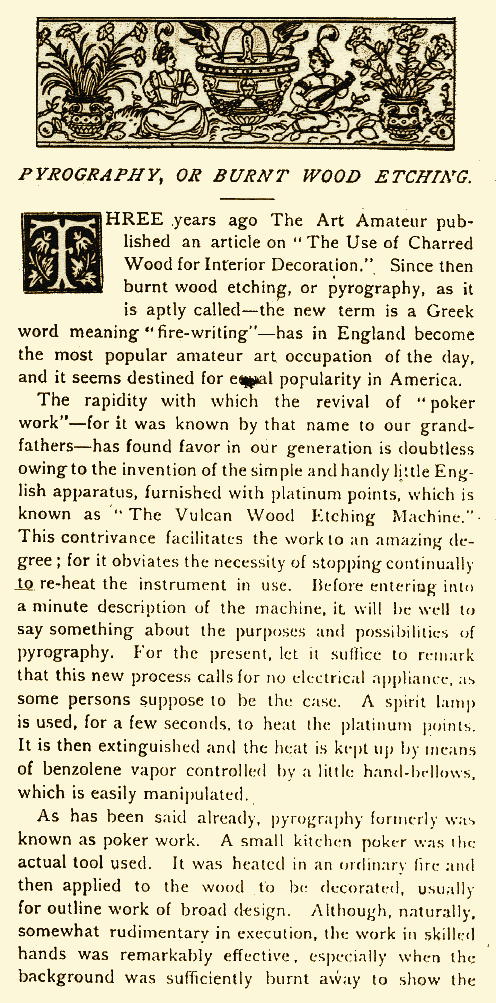 |

|
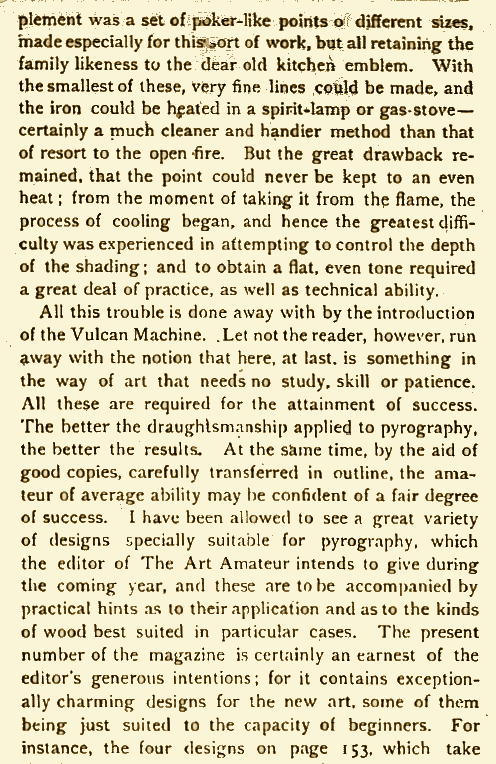
|
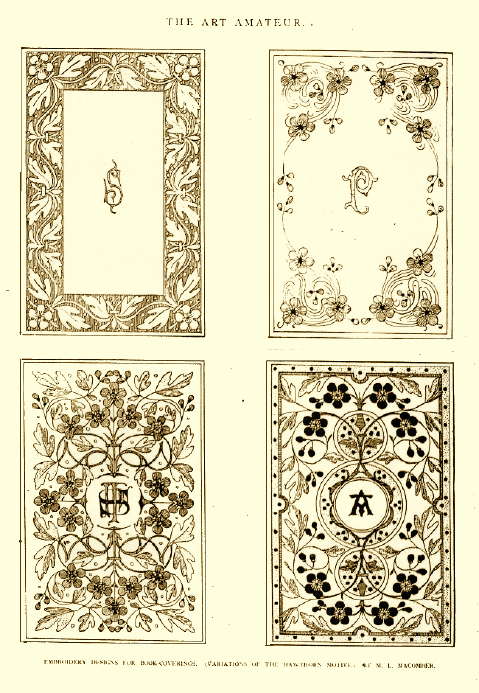
|
| The referenced "Hawthorn" designs from p. 153 of the Art Amateur |
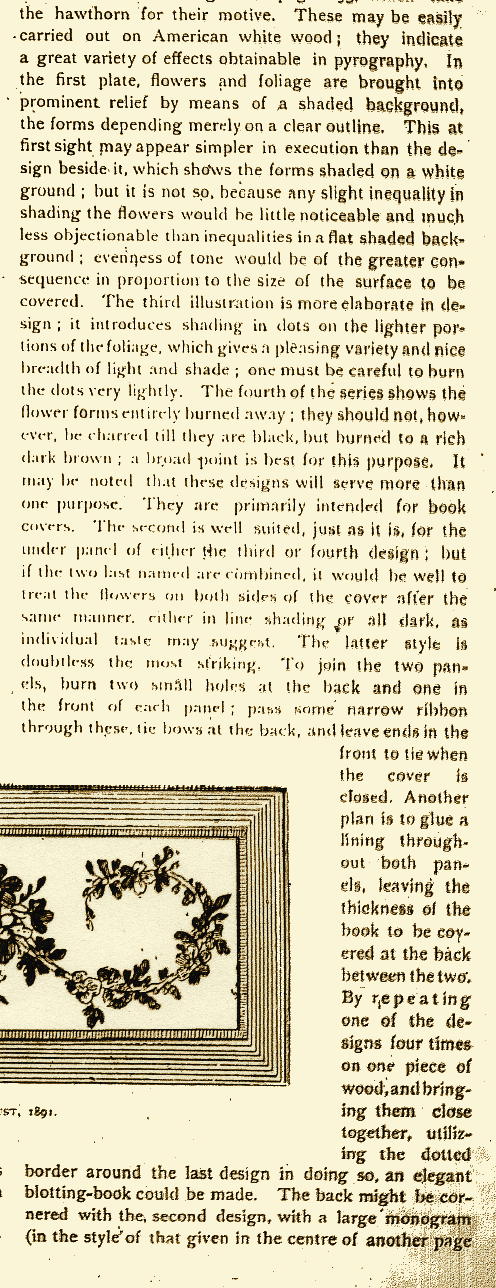
|
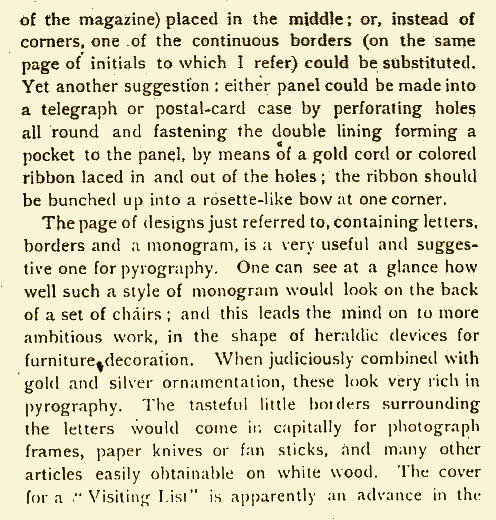
|
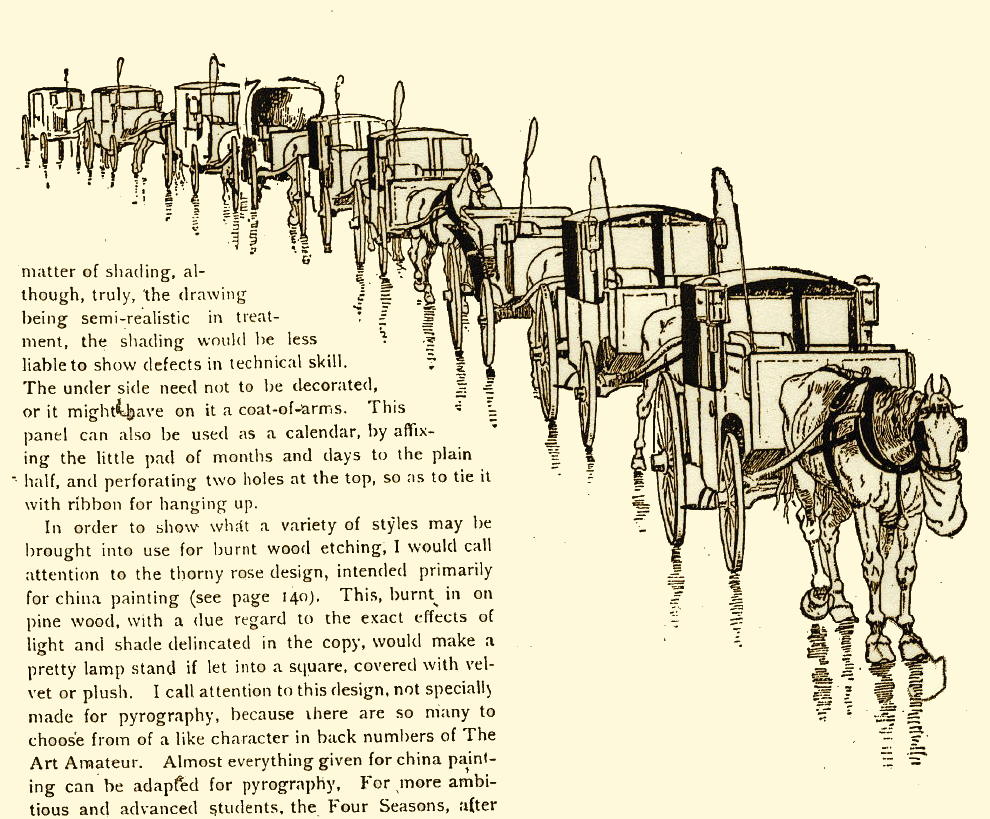
|
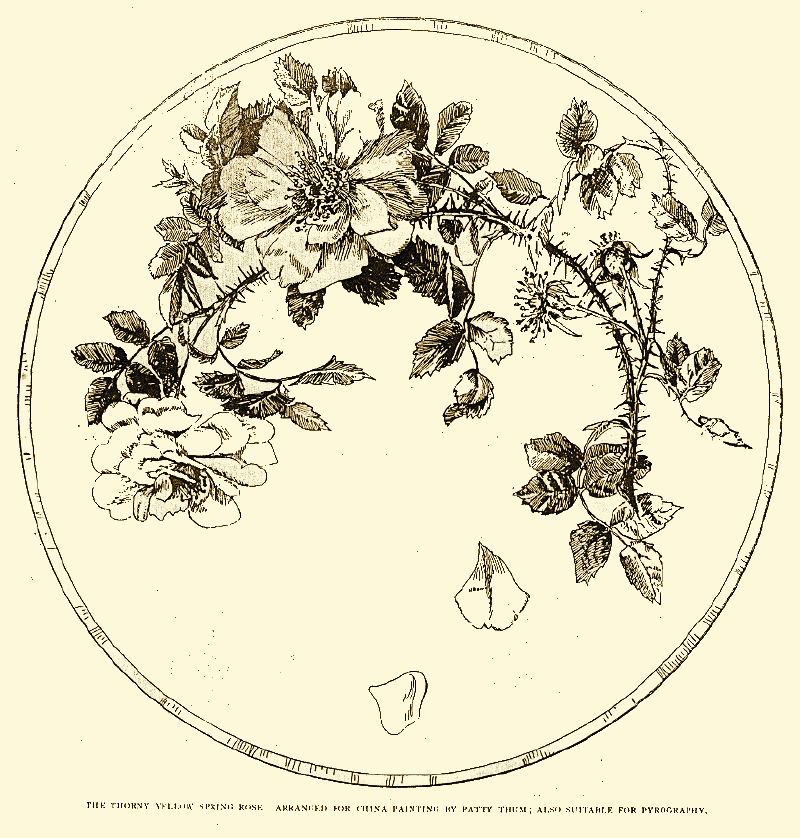
|
| The referenced "Thorny Rose" design (by Patty Thum) from p. 140 of the Art Amateur |
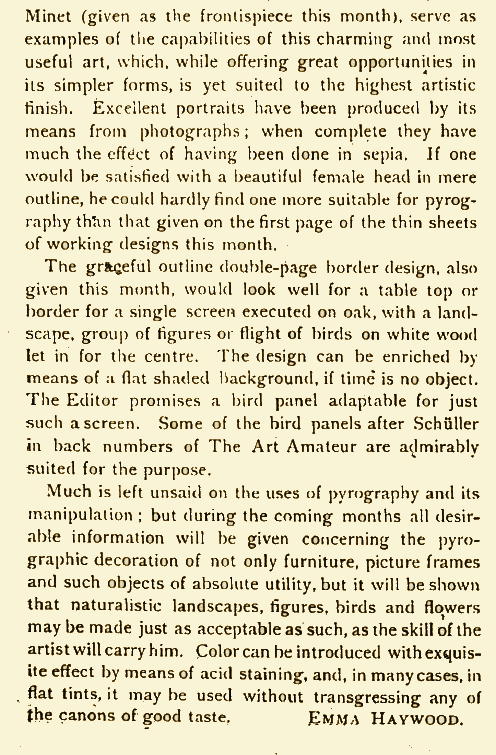
|
|
"Pyrography, or Burnt Wood Etching" column by Emma Haywood, published in the September 1891 issue of Art Amateur Magazine, apparently in lieu of Patty Thum's article with the subject "Burnt Wood Work" about her astonishing invention of an electric pyrography tool.
Digital images adapted from microfilm images of the Art Amateur Magazine, Reel 583, in the collection of The Sherrod Library, EAST TENNESSEE STATE UNIVERSITY, Johnson City, Tennessee. N.B. The illustration of the caravan of horse-drawn carriages was part of a whole page and crosses over two columns—the last column of Emma Haywood's article to which it does not seem to belong, and the first column of a feature entitled Pen Drawing for Illustration, to which it most likely pertains. |
In the opening sentence of her article, Emma Haywood references an earlier article, entitled The Use of Charred Wood in Interior Decoration, which was published in the December 1888 issue of the Art Amateur Magazine, p. 40. Research revealed that this article—introducing still another name for pyrography—turned out also in part to be about J. William Fosdick and Ball Hughes.
Since the discovery of Patty Thum's 1891 letter to Charles Kurtz introduced here in the E-Museum, research to find copies of the Art Amateur Magazine for the year 1891 began in the hope of ascertaining what happened to Patty Thum's article after Gleeson White's rejection of her drawings (because her asking price "was entirely too much") and her subsequent decision to ask for it all back if he wasn't going to use her four illustrations.
It now seems that there may be other explanations to what Patty Thum wrote to Charles Kurtz in July of 1891 when she was seeking "revenge" for White's rejection:
"This electric point-drawing is entirely new in this part of the country and little known I am sure any where for I have looked in vain for any publication bearing on it. Mr. White says however that it has been known and been popular in England for about a year."
In light of this article by Emma Haywood that appeared in the Art Amateur only two months later, various motivations seem, if not probable, at least possible, such as the following:
Mr. White may have not only been getting his own little revenge, but also seeking to protect, favor, or even promote what did indeed turn out to be the conjectured Vulcan tool, even though he should have known it was NOT ELECTRIC when he wrote his reply to Patty Thum.
Or Mr. White may have simply strategized that Patty Thum might take her article elsewhere and have it published, and not wanting to appear to have allowed a competitor to get "the scoop," he may have thought to cover his bases to make sure his magazine also had an article on pyrography, and that promoting an English pyrography tool that had already proven successful was a more prudent business option than one that had only just been invented by an unknown woman artist in remote Louisville, Kentucky, and that was not yet being manufactured. Pyrography was obviously not heretofore Emma Haywood's specialty; however, she was obviously a more experienced writer than Patty Thum, and a regular at the Art Amateur.
The motivation for Emma Haywood's seemingly anomalous note (if indeed it was originally hers rather than Gleeson White's edit)—
"For the present, let it suffice to remark that this new process calls for no electrical applicance, as some persons suppose to be the case."
— could have been a simple, general disclaimer because White himself had genuinely not previously realized the Vulcan was not electric. But could it have been intended as a slight, meant specifically for Patty Thum to undermine her invention and to discourage her from pursuing it?
Further research is underway in the hope of finding additional evidence that will point to the true reason or reasons why Patty Thum's invention was not successful. Emma Haywood was a regularly featured author at Art Amateur Magazine, although before this, her writing was focused on tapestry painting. She was already writing for the magazine herself when that 1888 article she referenced—The Use of Charred Wood in Interior Decoration—was published (with no author indicated). That earlier article provides a possible reason for her odd statement that "this new process calls for no electrical applicance, ...." Although it is not readily understandable why, it seems possible she may have been clarifying a statement from that earlier article—made surprisingly by none other than J. William Fosdick— about the use of electricity.
In reviewing subsequent issues of the Art Amateur it is apparent that the decision was made from that point forward to not only have a regular pyrography feature by Emma Haywood but to note on any appropriate designs in the pattern supplement that was included with each issue which designs were also suitable for pyrography. These designs often included designs for china painting submitted by Patty Thum, as exemplified by the "Thorny Rose" pattern above, which indicates it was "arranged for china painting by Patty Thum; also suitable for pyrography."
You are leaving the Salon of
Emma Haywood's 1891 Article in the Art Amateur Magazine
"Pyrography, or Burnt Wood Etching"
You can return to the
Patty Thum 1891 Salon,
the Pyrography Tools Exhibit,
the Antique Art Hall,
or continue on your tour to one of the following
Pyrographic Art Exhibit Halls:
Portraits and Paintings
Decorative and Applied Art
Sculpture
Folk and Traditional Art
Children's Pyrographic Art
Special Pyrographic Art
The Book Store and E-Museum Library exhibits
Pyrographic Tools and Techniques exhibit
Your questions and comments are welcome and appreciated. Please e-mail the E-Museum Curator.
Back to E-Museum Entrance homepage
©2008, 2009 Kathleen M. Garvey Menéndez, all rights reserved.
Last updated 11 October 2009.

